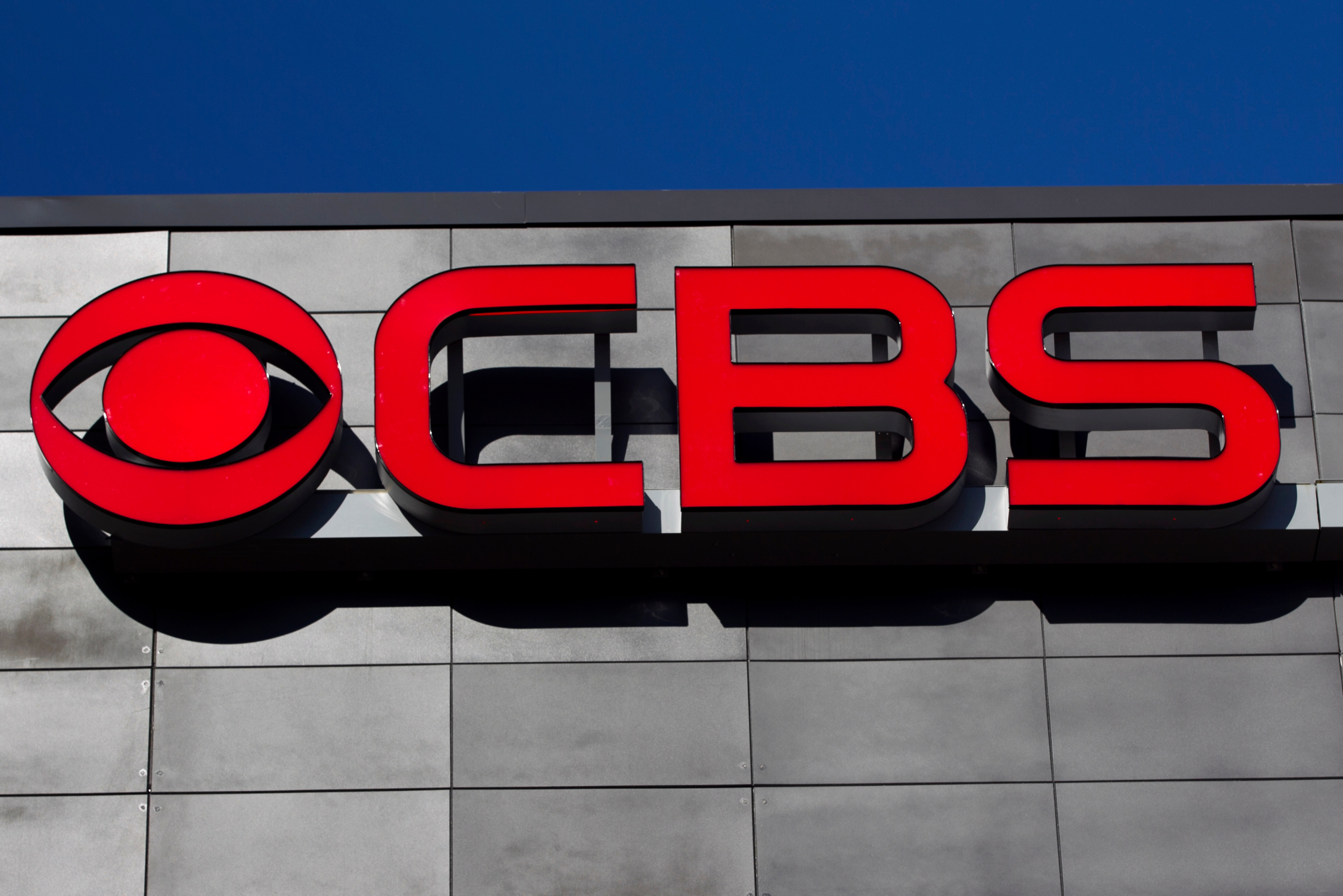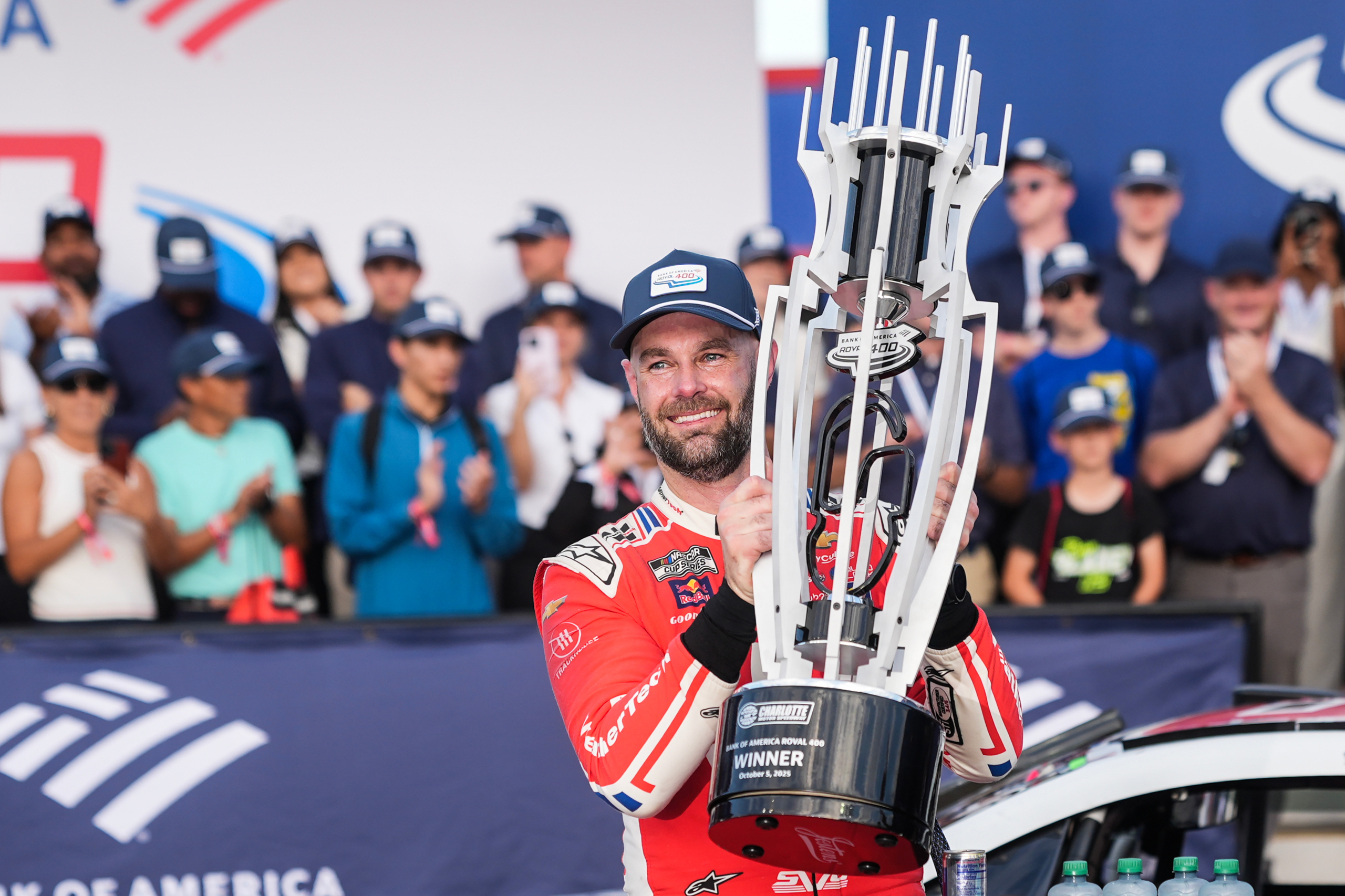Thought of the Day

Be like the ocean: Absorb wisdom from different sources.


Be like the ocean: Absorb wisdom from different sources.

By DAVID BAUDER AP Media Writer
NEW YORK (AP) — Paramount said Monday that it has bought the news and commentary website The Free Press and installed its founder, Bari Weiss, as the editor-in-chief of CBS News, saying it believes the country longs for news that is balanced and fact-based.
It’s a bold step for the television network of Walter Cronkite, Dan Rather and “60 Minutes,” long viewed by many conservatives as the personification of a liberal media establishment. The network is placing someone in a leadership role who has developed a reputation for resisting orthodoxy and fighting “woke” culture.
“I am confident her entrepreneurial drive and editorial vision will invigorate CBS News,” said David Ellison, who took over this summer as the corporate leader overseeing the network when his company, Skydance, purchased Paramount. “This move is part of Paramount’s bigger vision to modernize content and the way it connects — directly and passionately — to audiences around the world.”
No purchase price was announced for The Free Press, which has grown to reach 1.5 million subscribers since Weiss started it in 2021 after leaving The New York Times as an opinion editor. When she left the Times, she wrote a letter of resignation that spoke of a culture of intolerance at the newspaper and said she was bullied by colleagues who disagreed with her.
Weiss will report directly to Ellison and partner with the current CBS News President Tom Cibrowski, who reports to Paramount executive George Cheeks.
Editor-in-chief is a new role at CBS News. Ellison said that Weiss will “shape editorial priorities, champion core values across platforms and lead innovation in how the organization reports and delivers the news.”
In a letter to CBS News employees on Monday, Weiss said that watching CBS was part of a family tradition growing up in Pittsburgh. Her goal in the next few weeks is to get to know the staff, she said.
“I want to hear from you about what’s working, what isn’t, and your thoughts on how we can make CBS News the most trusted news organization in America and the world,” Weiss wrote. “I’ll approach it the way any reporters would — with an open mind, a fresh notebook and an urgent deadline.”
Some at CBS News have been concerned about what they see as signs that the news division is moving in a direction more friendly to President Donald Trump. Paramount’s merger with Skydance was approved by the administration shortly after Paramount settled the president’s lawsuit against “60 Minutes.” Ellison has hired Kenneth Weinstein, former head of a conservative think tank and a Trump contributor, as an ombudsman to examine complaints about CBS News.
“60 Minutes,” which is two weeks into its new season, has been seeking an interview with Trump.
CBS isn’t the only news organization to face pressure from the president. He also settled a lawsuit against ABC News, has sued The New York Times and Wall Street Journal, and is fighting a battle with The Associated Press over access.
Broadcast news organizations are generally fading in influence with the growth of online alternatives, and have aging audiences. CBS is generally third in popularity behind ABC and NBC, but “60 Minutes” and “CBS News Sunday Morning” have devoted fan bases.
Rather, who stepped down as anchor and managing editor of the “CBS Evening News” in 2005, told The Associated Press that he did not know Weiss and hopes she gets to know the people at CBS News before making any big changes.
“No one has to send a memo to everyone down the line at CBS News about what is going on with journalism and this presidency,” Rather said. “It is obvious that there is tremendous pressure to bend the knee to the Trump administration. The fear is that this appointment is part of that overall play.”
Weiss has worked in opinion journalism and has little background in broadcast journalism. She has described herself politically as a centrist and wrote a column for the New York Post in 2021 headlined, “10 ways to fight back against woke culture.”
Writing for the liberal website the Unpopulist, Matt Johnson said that “one reason for The Free Press’ popularity is that it offers intellectual reassurances to legions of anti-anti-Trump readers — sophisticated conservatives who may be uneasy about Trumpism, yet want to believe that wokeness and other left-wing excesses are the primary threats to western civilization.”
Weiss told fellow CBS News employees that she stood for the same core journalistic values that have defined the profession from the beginning, including reporting on the world as it actually is and being fair, fearless and factual.
In separate staff memos, Ellison and Weiss outlined similar philosophies about a mainstream America being ill-served by a destructive form of partisanship.
“When we reduce every issue to ‘us vs. them’ or ‘my way vs. the wrong way,’ we close ourselves off from listening, learning and ultimately growing, both as individuals and as a society,” Ellison wrote. “I don’t pretend to have a solution to this challenge. But I do believe we each have a responsibility to do our part.”
Weiss will remain as the boss of The Free Press, which she indicated would continue on the same course but expand more quickly with Paramount’s money. Indeed, she said in a letter to subscribers that The Free Press will help reshape CBS News.
She said mainstream Americans — which she defined as being politically mixed and pragmatic — are being ill-served by an illiberalism from the fringes of society.
“On the one hand, an America-loathing far left,” she wrote. “On the other, a history-erasing far right. These extremes do not represent the majority of the country, but they have increasing power in our politics, our culture and our media ecosystem.”
In a Pew Research Center survey taken earlier this year, 56% of Americans who are Democrats or lean Democrats say they trust CBS News, while only 23% of Republicans say the same thing. Those levels are similar across all major broadcast media outlets, with Republicans primarily turning to Fox News Channel.

By MARIA SHERMAN AP Music Writer
NEW YORK (AP) — Five years after their influential drummer and lyricist Neil Peart died of glioblastoma, the Canadian band Rush have announced a reunion tour.
On Monday, Rush co-founders Geddy Lee and Alex Lifeson revealed a 12-date, seven city tour is scheduled for summer 2026, kicking off in June at the Kia Forum in Los Angeles — where the band played their final show in 2015.
The reunion tour will end in Cleveland in September 2026. They’ll also hit Mexico City, Fort Worth, Texas, Chicago, New York and Toronto.
Taking Peart’s place is celebrated German composer and producer Anika Nilles. She has previously toured with Jeff Beck.
“It’s been over 10 years since Alex and I have performed the music of Rush alongside our fallen bandmate and friend Neil. A lifetime’s worth of songs that we had put our cumulative hearts and souls into writing, recording and playing together onstage,” Lee wrote in a statement.
He added that he and Lifeson “could not be more excited” to introduce Nilles to their fanbase “whom, we know, will give her every chance to live up to that near impossible role.”
They are also hoping to add additional musicians into the fold for the performances.
Earlier this year, the band released a greatest hits collection titled “Rush 50.” Fittingly, it ended with the last songs the band played at their final concert a decade ago.
Their 2026 tour is titled “Fifty Something.”
“We are thrilled to support the Fifty Something tour, celebrating a band whose music has resonated and inspired fans for generations, and to honor Neil’s extraordinary legacy as both a drummer and lyricist,” Peart’s widow and daughter, Carrie Nuttall-Peart and Olivia Peart, shared in a joint statement.
“Neil’s musicianship was singular… As the band enters this new chapter, it promises to be truly unforgettable. We are excited to see how their new vision unfolds, and to hear this legendary music played live once again.”

By KEVIN FREKING and JOSH BOAK Associated Press
WASHINGTON (AP) — Lawmakers provided few public signs of meaningful negotiations to break an impasse on reopening the federal government as the shutdown entered its sixth day. House Speaker Mike Johnson said “there’s nothing for us to negotiate” while House Democratic leader Hakeem Jeffries declared the “time is now” to work out a deal on health care.
Johnson, R-La., told reporters on Monday that they could stop asking why he wasn’t negotiating an end to the impasse and that it was up to a handful of Democrats to “stop the madness” and pass a stopgap spending bill that had earlier passed the House.
“We did the job to keep the government open, and now it’s on the Senate Democrats,” Johnson said.
The House is not expected to be in session this week, focusing attention on the Senate to take the lead on any deal in the Republican-led Congress. Yet even with House lawmakers away, the Republican and Democratic leaders have been holding almost daily briefings as they frame their arguments and seek to shift blame for the shutdown.
Democrats are insisting on renewing subsidies to cover health insurance costs for millions of households, while President Donald Trump wants to preserve existing spending levels for now as he believes that Democrats will have to fold because of the jobs and federal infrastructure and energy projects being put at risk.
Jeffries said in an NBC “The Today Show” interview Monday that notices have already started to go out to Americans enrolled in health insurance exchanges established through the Affordable Care Act, with those notices showing dramatic increases in premiums next year.
“That’s what people are facing right now, which is why we need to address it,” Jeffries said.
The stalemate comes at a moment of troubling economic uncertainty. While the U.S. economy has continued to grow this year, hiring has slowed and inflation remains elevated as the Republican president’s import taxes have created a series of disruptions for businesses and hurt confidence in his leadership. At the same time, there is a recognition that the nearly $2 trillion annual budget deficit is financially unsustainable.
The Trump administration sees the shutdown as an opening to wield greater power over the budget, with multiple officials saying they will save money as workers are furloughed by imposing permanent job cuts on thousands of government workers, a tactic that has never been used before.
Trump had seemingly suggested Sunday night that layoffs were already taking place, but White House press secretary Karoline Leavitt said Trump was talking about furloughs. Under a furlough, workers cannot report to work, but they will return to their job and get paid retroactively after the shutdown ends. She said layoffs were still planned if the shutdown continues.
The talk of layoffs has escalated an already tense situation in which Washington lawmakers have struggled to find common ground and build mutual trust. Leaders in both parties are betting that public sentiment has swung their way, putting pressure on the other side to cave.
Even though it would be Trump’s choice to cut jobs, Republicans are putting the blame on the Democrats because of the shutdown.
Democratic Sen. Adam Schiff of California defended his party’s stance on the shutdown, saying the possible increase in health care costs for millions of Americans would make insurance unaffordable. He called it a “crisis.”
But Schiff also noted that the Trump administration has stopped congressionally approved spending. That essentially undermines the value of Democrats trying to seek compromises on the budget since the administration could block the spending of money from any deal. The Trump administration sent Congress roughly $4.9 billion in what are called pocket rescissions on foreign aid, a process that meant the money was withheld without time for Congress to weigh in before the previous fiscal year ended last month.
“We need both to address the health care crisis, and we need some written assurance in the law — I won’t take a promise — that they’re not going to renege on any deal we make,” Schiff said.
But a deal appears a long way off. The two parties do not appear to be having productive conversations with each other in private, even as Republicans insist they are in conversation with their Democratic colleagues.
The Senate has voted multiple times on the same legislation to reopen the government, only to have it fail each time.
The last vote came on Friday, as Republican bill that would reopen the government failed to notch the necessary 60 votes to end a filibuster in the 100-member chamber.
Senate Majority Leader John Thune of South Dakota said Sunday that the shutdown on discretionary spending, the furloughing of federal workers and requirements that other federal employees work without pay will continue so long as Democrats vote no.
“They’ll get another chance on Monday to vote again,” Thune said. “And I’m hoping that some of them have a change of heart.”
___
Schiff appeared on NBC’s “Meet the Press,” and Thune was on Fox News Channel’s “Sunday Morning Futures.”

This recipe for homemade pickled onions is super easy and can add flavor to a variety of dishes!
1. Prep the veggies
Thinly slice the onion and pack the slices into a glass jar. Do the same with the garlic clove.
2. Create the pickling mixture
In a small bowl, mix together the vinegar, hot water, sugar, salt, and other spices. Then, pour the mixture over the sliced onions and garlic in the jar so that it fully submerges them.
3. Let the onions marinate
Leave the onions in the jar with the pickling mixture for around 30-60 minutes, then enjoy on a sandwich, salad, taco, or any other dish of your choice! You can refrigerate the pickled onions for up to 2 weeks.


Don’t let yesterday take up too much of today.

By SAMY MAGDY and MELANIE LIDMAN Associated Press
CAIRO (AP) — Israel and Hamas prepared for indirect negotiations in Egypt on Monday, as hopes for a possible ceasefire in Gaza grew after Prime Minister Benjamin Netanyahu said a hostage release could be announced this week.
Tuesday marks two years since the Hamas attack that sparked the war.
President Donald Trump has welcomed the Hamas statement accepting some elements of the U.S. peace plan. Israel has said it supported the new U.S. effort. Under the plan, Hamas would release the remaining 48 hostages — about 20 believed to be alive — within three days. It would give up power and disarm.
The delegation led by top Israeli negotiator Ron Dermer will leave Monday for the talks in Sharm el-Sheikh, Netanyahu’s office said. An Egyptian official said the Hamas delegation had arrived. The official, speaking on condition of anonymity because he wasn’t authorized to brief reporters, said U.S. envoy Steve Witkoff is joining the talks.
Discussions will focus on the proposed exchange of hostages for Palestinian prisoners held by Israel, Egypt’s foreign ministry said.
U.S. Secretary of State Marco Rubio called the situation “the closest we’ve come to getting all of the hostages released.”
Speaking on ABC’s “This Week,’’ he described two phases after Hamas accepts Trump’s framework: The hostages are released and Israel pulls back in Gaza to the “yellow line,” where it was in August.
Rubio told CBS that Hamas should release hostages as they are ready, and that bombardment needs to end so they can be released.
The U.S. plan also addresses Gaza’s future. In a text exchange with CNN’s Jake Tapper, Trump said there would be “complete obliteration” if Hamas stayed in power there. Trump also texted that Netanyahu was on board for ending the bombing and peace in Gaza but added, “soon on the rest.”
Israeli government spokeswoman Shosh Badrosian told journalists that Netanyahu is in “regular contact” with Trump and that the prime minister has stressed that the talks in Egypt “will be confined to a few days maximum.”
“I hope that we are closest to a hostage deal since the (ceasefire) deal in January,” Israeli Foreign Minister Gideon Sa’ar said in a speech.
Anxious relatives of hostages gathered near Netanyahu’s residence in Jerusalem, with some urging Trump to continue to apply pressure. Israel’s recent military offensive in Gaza City led many to fear for the hostages’ lives.
“We cannot allow such a historic agreement to be sacrificed again,” said Michel Ilouz, father of Guy Ilouz.
As hundreds of thousands of people marched across several European cities and elsewhere in support of Palestinians, the foreign ministers of eight Muslim-majority countries issued a joint statement welcoming steps toward a possible ceasefire.
They also underlined their commitment to the return of the Palestinian Authority to Gaza, unifying Gaza and the West Bank and reaching an agreement leading to a “full Israeli withdrawal” from Gaza.
Rubio told ABC that decisions regarding a governing structure or international group to manage Gaza can take place simultaneously with the ceasefire’s first step.
“That’s the part that I think is going to be a little tougher to work through, but that’s what’s going to provide permanency to the end of the conflict,” he said.
Trump has ordered Israel to stop bombing Gaza, but residents and local hospitals said strikes continued across the territory.
The Israeli government spokeswoman, Badrosian, said “certain bombings have actually stopped inside of the Gaza Strip.”
But Israel’s military chief of staff, Lt. Gen. Eyal Zamir, said that “if the political effort does not succeed, we will return to fight.”
At least eight people were killed Sunday in multiple strikes in Gaza City, according to Shifa Hospital, which received the casualties. A security official who spoke on condition of anonymity because they were not authorized to talk to the media said the strikes were against Hamas militants who were a threat to troops.
Four other people were shot dead near an aid distribution site in the southern city of Rafah, according to Nasser Hospital. Israel’s military said it was not involved.
Doctors Without Borders confirmed the death of colleague Abed El Hameed Qaradaya, who was wounded in an attack Thursday that killed another colleague in Gaza.
Gaza’s Health Ministry said the Palestinian death toll in the war reached 67,139 on Sunday, with nearly 170,000 injured. The ministry does not differentiate how many of those killed were civilians or combatants, but says women and children make up about half of the dead. The ministry is part of the Hamas-run government, and the U.N. and many independent experts consider its figures to be the most reliable estimate of wartime casualties.
Israel’s military has said it continues to dismantle Hamas infrastructure and warned residents not to return to northern Gaza.
“We’re on the brink, and we don’t know whether one will die of a strike or starvation,” said Mahmoud Hashem, a Palestinian father sheltering in a tent in Gaza City.
___
Lidman reported from Tel Aviv, Israel. Associated Press writer Andrew Wilks contributed from Istanbul.

By STEVE REED AP Sports Writer
CHARLOTTE,. N.C. (AP) — Rico Dowdle told his Carolina Panthers teammates last week that he’d run for 180 yards against the Miami Dolphins.
It sounded like a bold prediction, but he more than backed it up.
Dowdle, who got his first start of the season in place of the injured Chuba Hubbard, had runs of 53 and 43 yards in the second half on Sunday and finished with a career-high 206 yards on 23 carries, tied for the second-highest rushing total in franchise history — only 5 yards shy of breaking DeAngelo Williams’ single-game record.
“I put trust in those guys up front,” Dowdle said after Carolina’s 27-24 come-from-behind win. “I knew we would be able to run the ball, it was just a matter of how well we could run it. I had great confidence in those guys up front and myself, and it worked out in my favor. We had an opportunity and we took advantage.”
Dowdle almost didn’t get that chance.
Bryce Young turned the ball over on each of Carolina’s first two possessions and the Panthers fell behind 17-0. But instead of panicking and going exclusively to the passing game, Panthers second-year coach Dave Canales stuck with Dowdle — and it paid off.
Dowdle even helped out the coaching staff along the way.
During the second quarter, he noticed the Panthers might have an opportunity for a big gain if they ran a toss play to the right side. He relayed the message to offensive coordinator Brad Idzik in the second quarter, and Canales decided to call the play to start the second half.
The result was Dowdle breaking a tackle and scampering 53 yards to set up a field goal that cut Miami’s lead to 17-13. He later scored on a 1-yard plunge to give Carolina its first lead with 6:10 remaining.
“(Idzik) came up to me after the game and told me, ‘Just tell me what runs you want to run,’” Dowdle said with a laugh.
It’s unclear if Hubbard, who has a calf injury, will be back for Week 6. No matter what, Dowdle appears to have earned more playing time.
“The attitude that he ran with, the violence that he ran with, finishing through arm tackles, it’s something that we’ve been challenging our guys on,” Canales said. “When we get you to the second level, have a plan for how you finish, and I saw a great finish today out of Rico.”
Dowdle didn’t realize until someone told him after the game how close he was to breaking the team rushing record.
He felt like he would have shattered the mark if he hadn’t had to leave the game on multiple occasions in the second half with cramping in both legs. Dowdle said he drank five cups of pickle juice and a packet of hydration mix, which allowed him to return for the final drive.
“Hey, I will get another opportunity to do it again,” Dowdle said of the record.
His first chance comes next Sunday on the same field against his former team, the Dallas Cowboys.
Dowdle eclipsed 1,000 yards rushing for the Cowboys last season, but owner and general manager Jerry Jones showed little interest in re-signing him. Dowdle said he’s had a chip on his shoulder since coming into the league as an undrafted free agent and having to bide his time as a special-teams player. Facing Dallas, he said, might mean a little more to him.
The Dolphins ranked 30th in the league against the run coming into the week; the Cowboys were 20th.
“They’ve got to buckle up. I think they know, for sure,” Dowdle said. “I had been there for five years and they didn’t keep me there five years for no reason, I will definitely say that.”

By JENNA FRYER AP Auto Racing Writer
CONCORD, N.C. (AP) — Joey Logano, winner of two of the last three Cup Series championships, was never part of the conversation of potential elimination from NASCAR playoffs.
At least not until Sunday’s race at Charlotte Motor Speedway, where the Team Penske driver found himself struggling most of the race and in a tense battle with Ross Chastain for the final spot in the round of eight.
The two swapped the final transfer spot multiple times as NASCAR prepared to cut the field from 12 drivers to eight ahead of the third round of the playoffs. Chastain was in, then it was Logano, then the two were tied with Logano holding the tie-breaker.
Logano, on fresher tires, worked his way through the field for every point possible. Chastain was nursing old Goodyears and holding off every challenging driver closing quickly in his rearview mirror.
But then came Denny Hamlin, who for the second week in a row played a pivotal role in the finish and the playoff field. A week ago, his hard racing of Bubba Wallace kept Wallace from winning at Kansas Speedway and ultimately led to Wallace being eliminated from the playoffs.
This time it was chasing down Chastain. The two cars had contact, Chastain spun, and crossed the finish line backward in 21st, one spot behind Logano. It was enough to give Logano the final spot in the third round of the playoffs and eliminate Chastain.
An animated Hamlin on pit road complained to his No. 11 crew that he was not made aware of the situation and would not have passed Chastain had he known it would benefit three-time Cup Series champion Logano.
“I didn’t know anything about anything on that last run, I wasn’t very good,” Hamlin said. “I saw (Chastain) and I didn’t know anything about anything going on. I didn’t know. I thought I was racing for about 18th. I just wish I knew so I could have been either prepared or made a different decision.”
Shane van Gisbergen, meanwhile, won his fifth consecutive race on a road or street course. Charlotte, called The Roval in this configuration, is a hybrid road course/oval.
The theory headed into Charlotte was that van Gisbergen had the race locked up and the only way a driver below the cutline could save his championship chances was if the New Zealander was beat.
Kyle Larson and Christopher Bell both put tough challenges on van Gisbergen, but van Gisbergen emerged from a car-slamming battle with Larson through the turns with 14 laps remaining and took the lead for good with 11 laps remaining.
That eliminated any shot for Tyler Reddick and Wallace of 23XI Racing, or Austin Cindric of Team Penske, claiming the final playoff position. Chastain of Trackhouse Racing remained in the hunt, though, as Logano couldn’t get his Penske Ford running well enough to secure his spot in the playoffs.
“Everybody was telling me how close it was going to be there. We’re still in. We’re still alive, baby,” Logano said as he reveled in a loud chorus of fan booing. “I knew it was within a point there, and I knew we were going to be tied there at the end and Ross was going to do whatever he had to do to make it happen.
“If you want drama, the playoffs bring it every time. What an entertaining finish there. We’ve still got a shot.”
It was similar to a year ago when Logano left Charlotte eliminated from the playoffs, only to learn hours later while having dinner with his family that Alex Bowman had been disqualified and Logano was back in the field. He went on to win the Cup Series championship.
“Unforced errors, it’s just terrible,” Chastain said of two early race speeding penalties that made him want to “start the whole day over.”
“It’s heartbreaking for almost 200 employees at Trackhouse,” Chastain said. “It’s not acceptable, just completely unacceptable. To get here and fail is a terrible feeling. I will wake up tomorrow and get right back to work.”
The eight drivers moving on to the third round of the playoffs are Ryan Blaney and Logano of Penske, Chase Elliott, Larson and William Byron of Hendrick Motorsports, Hamlin, Bell and Chase Briscoe of Joe Gibbs Racing.
Chastain, Cindric, Reddick and Wallace were eliminated — which takes both of the Michael Jordan-owned cars out of title contention.
Cindric opened Sunday ranked last in the 12-driver playoff field and never had a shot to race for the win that would have prevented his elimination.
He spun early, was hit by another driver in the second stage, and had to go to the garage for lengthy repairs. That made him the first of four drivers eliminated. Team Penske teammates Logano and Blaney, who combined have won the last three Cup titles, advanced into the round of eight.
Chad Knaus, the vice president of competition at Hendrick Motorsports, was named the recipient of the 2025 Smokey Yunick Award ahead of Sunday’s race.
The award that began in 1997 is named after the late mechanic and innovator Henry “Smokey” Yunick to recognize an individual who demonstrated exceptional innovation and made a major impact in the world of motorsports.
“This means a lot to me,” Knaus said. “I have been a Smokey Yunick fan for my career, quite honestly, and the biggest reason is because of the stemming of invention and pushing the boundaries — that if there’s not a rule, try to exploit that opportunity. When I was a young man, the stories, and the lore of Smokey Yunick, was there. That was a bit of a fuel for me — it was something that I wanted to try to create.”
Knaus was inducted into the NASCAR Hall of Fame in 2024 and won 82 Cup Series races — 81 and seven Cup Series titles with fellow NASCAR Hall of Famer Jimmie Johnson — and one with William Byron.
NASCAR opens the third round of the playoffs Sunday at Las Vegas Motor Speedway, where Logano won last year to earn a berth into the championship-deciding finale. He went on to win his third Cup Series title, most among active drivers.

By DIDI TANG and JOSH FUNK Associated Press
WASHINGTON (AP) — President Donald Trump is planning a significant aid package to U.S. soybean farmers to help them survive China’s boycott of American beans in response to his trade war even as the president says he is still seeking a soybean deal with Beijing.
But farmers are worried that time is quickly running out to reach a deal in time to sell any of this year’s crop to their biggest customer.
Treasury Secretary Scott Bessent on Thursday said on CNBC that the public could expect news of “substantial support for our farmers, especially the soybean farmers” as soon as Tuesday.
Details of the aid package are unknown, but it would come as the world’s two largest economies have been unable to reach a trade deal and China has halted purchases of U.S. beans. China, the biggest foreign buyer of American soybeans for many years, last bought American beans in May and has not bought any for this harvest season, which began in September.
“The Soybean Farmers of our Country are being hurt because China is, for ‘negotiating’ reasons only, not buying,” Trump wrote in a Truth Social post on Wednesday. “We’ve made so much money on Tariffs, that we are going to take a small portion of that money, and help our Farmers.”
“I’ll be meeting with President Xi, of China, in four weeks, and Soybeans will be a major topic of discussion,” Trump wrote.
The soybeans that China imports largely for oil extraction and animal feed are an important crop for U.S. agriculture because they are the top U.S. food export, accounting for about 14% of all farm goods sent overseas and China has been buying 25% of all American soybeans in recent years.
U.S. farmers grew $60.7 billion worth of soybeans, or nearly 4.3 billion bushels, in the 2022-2023 marketing year, according to the American Soybean Association. Just over half were exported. Illinois is the top soybean growing state, but Iowa, Nebraska and Minnesota are also large producers.
Trump and Chinese President Xi Jinping are expected to meet on the sidelines of the annual summit of the Asia Pacific Economic Cooperation grouping, to be held at the end of October in South Korea.
In Trump’s first trade war with China, he gave American farmers more than $22 billion in aid payments in 2019 and nearly $46 billion in 2020, though the latter also included aid related to the COVID pandemic.
Caleb Ragland, a Kentucky farmer who serves as president of the American Soybean Association, welcomed Trump acknowledging the difficulties faced by farmers. He said actions are needed to prevent many farmers from going out of business.
Before the trade war, farmers were already pinched by high costs and low crop prices, he said. Then, their biggest customer vanished.
“It’s just unfortunate that we’re being used as a bargaining chip in this trade war that’s not of our own doing,” Ragland said.
He said time is running low for the two governments to strike a deal, because China has already ordered soybeans from countries such as Brazil and Argentina for deliveries through December and, if there’s no soybean deal soon, China could skip the U.S. entirely.
“If they get another couple months, they’re into new crop soybeans in Brazil and Argentina. And they’re going to bypass us altogether if we’re not careful,” Ragland said.
China has slapped 20% tariffs on U.S. soybeans since Trump announced his tariffs on the world in the spring, making U.S. beans uncompetitive in price.
The retaliatory tariffs are in response to Trump’s new import taxes on Chinese goods over allegations that Beijing has failed to stem the flow of chemicals used to make fentanyl as well as Trump’s across-the-board “Liberation Day” tariffs, which have been reduced to the 10% baseline rate.
Observers say China could ease tariffs on U.S. farm goods should the White House walk back on fentanyl-related tariffs. That has yet to happen.
The White House “has not prioritized fentanyl” since this spring, said Sun Yun, director of the China program at the Washington-based think tank Stimson Center. She said Wang Xiaohong, China’s public security minister, showed up in Geneva in May but met no counterpart from the U.S. to negotiate with.
But it is not time yet to write off a soybean deal, she said. “China still needs to have something to show for at the leadership meeting in South Korea,” Sun said.
Gabriel Wildau, managing director of the consultancy Teneo, said a soybean deal is “the lowest-hanging fruit” for both governments.
“China needs beans, and the U.S. has them to sell. It costs China basically nothing to shift towards U.S. beans and away from Brazil and Argentina,” Wildau said. “If Washington and Beijing can’t reach a deal on soybeans, then they don’t have much hope of reaching a deal on thornier issues like export controls.”
Argentina is a sore subject for U.S. farmers right now because on September 24, Beijing took advantage of a tax holiday in Argentina and ordered nearly 2 million tons of Argentine soybean and soy products. The tax holiday came after the U.S. signaled it would provide a $20 billion support package to help stabilize the Latin American country’s economy.
“That situation was angering to many farmers,” Ragland said. “And while I don’t think the specific intent was just to give a big chunk, give $20 billion to Argentina so that they could send China soybeans. That was the result. And the optics of it look absolutely terrible.”
Government aid might be necessary to help farmers get through this year if they cannot sell to China, but farmers say they would rather sell their crops on the market.
“All farmers are proud of what they do and they don’t like handouts. We’d rather make it with our own two hands than have it handed to us,” Iowa farmer Robb Ewoldt said.
Meanwhile, farmers like Ryan Mackenthun, a fifth-generation farmer in south-central Minnesota, say they will do everything they can to survive.
“It’s definitely tighten the belt, to look at the inputs, look at the previous investments I made in fertilizer and see if I can stretch another year or two out of them to reduce costs but maintain the same yield projections, run equipment longer,” Mackenthun said.